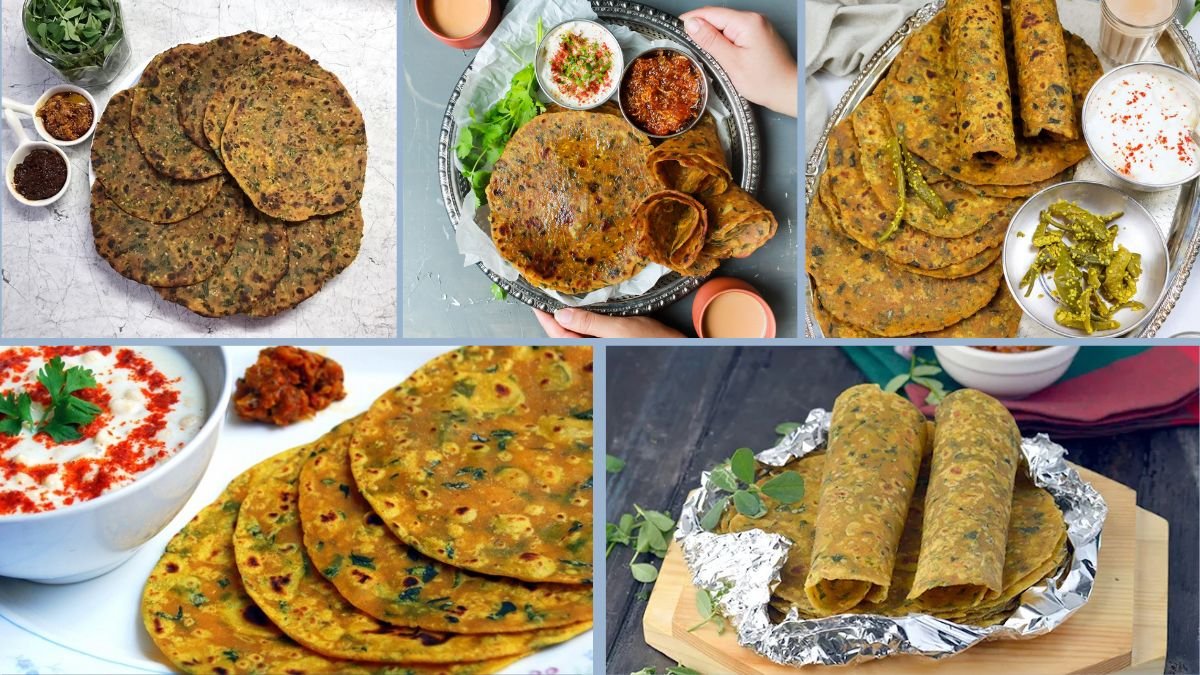Thepla, a soft flatbread from Gujarat, is celebrated for its portability, long shelf life, and nutritional benefits. Often made with whole wheat flour, fresh herbs, and spices, it is a preferred travel food for Indian households. Unlike ordinary chapatis, theplas are designed to stay soft for hours—even days—making them ideal companions for journeys. This paper presents a 5-step recipe for soft theplas, emphasizing vegetarian ingredients, nutritional advantages, and techniques that maintain softness during storage and travel.
Introduction
Traveling with homemade food is an age-old practice in India, blending convenience with cultural comfort. Among travel-friendly dishes, thepla holds a special place. Originally from Gujarati cuisine, it is made with wheat flour, fenugreek leaves (methi), yogurt, and spices. It is both filling and easy to carry, with minimal risk of spoilage when prepared correctly.
Theplas are more than just food—they are a link to home, tradition, and nourishment on the move. The challenge lies in ensuring they remain soft, flavorful, and safe to consume over long hours of travel. This structured 5-step recipe explores the process of preparing perfect travel-friendly theplas.
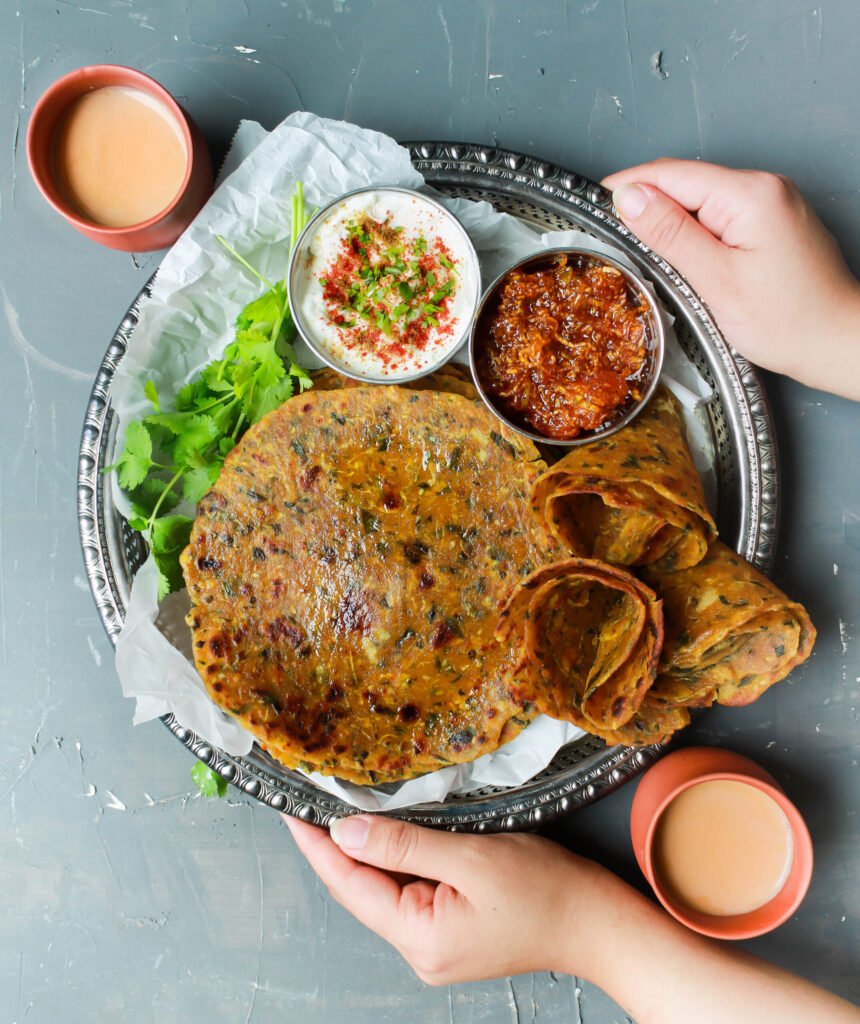
Step 1: Choosing Ingredients with Travel in Mind
1a. Flour Base
- Whole wheat flour (atta): Provides fiber, protein, and a hearty base.
- Optional blend: A small portion of besan (gram flour) or millet flour (bajra, jowar) can be mixed for added nutrition and flavor.
1b. Moisture Balancers
Theplas stay soft when balanced with natural moisturizers:
- Yogurt (curd): Adds softness, tang, and helps the dough stay pliable. For longer journeys, use slightly thick or hung curd to minimize water content.
- Oil (1–2 tbsp): Acts as a natural preservative and prevents dryness.
1c. Flavoring Agents
- Fenugreek leaves (methi): The traditional choice, lending bitterness and aroma. Dried methi (kasuri methi) can be substituted when fresh leaves are unavailable.
- Spices: Turmeric, red chili powder, coriander powder, cumin, sesame seeds, and ajwain (carom seeds) enhance taste and aid digestion during travel.
- Salt: Add carefully, as excess salt draws out moisture and may reduce shelf life.
1d. Optional Additions
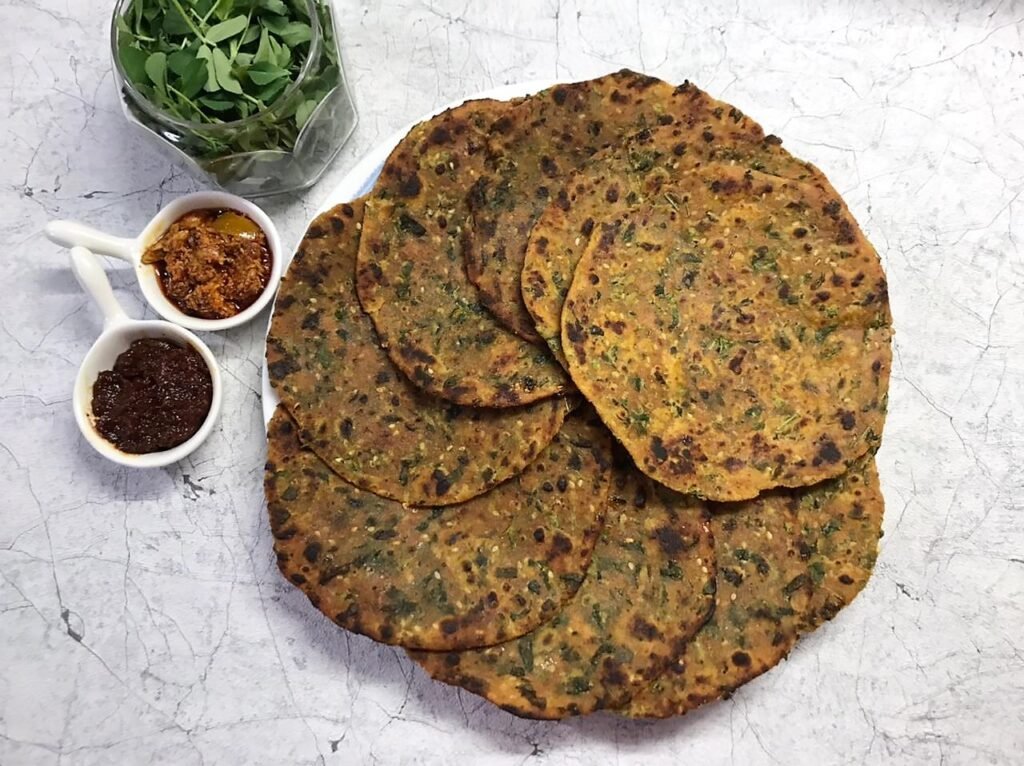
While methi is the classic herb, grated bottle gourd (doodhi) or spinach can be used. However, for travel theplas, stick to drier greens to avoid excess moisture.
Step 2: Preparing the Dough
2a. Mixing
- In a large bowl, combine whole wheat flour with chopped methi, spices, and salt.
- Add yogurt and a little oil. Mix well.
- Gradually add water to form a smooth, medium-soft dough.
2b. Kneading Technique
Knead for 8–10 minutes until elastic. Rest dough for 20–30 minutes, covered with a damp cloth. Resting helps gluten formation, ensuring rolling ease and softness after cooking.
2c. Travel-Safe Adjustments
- Avoid over-hydrating dough, as excess water makes theplas soggy and reduces shelf life.
- A teaspoon of sugar can be added to balance methi’s bitterness and improve browning.
Step 3: Rolling & Shaping
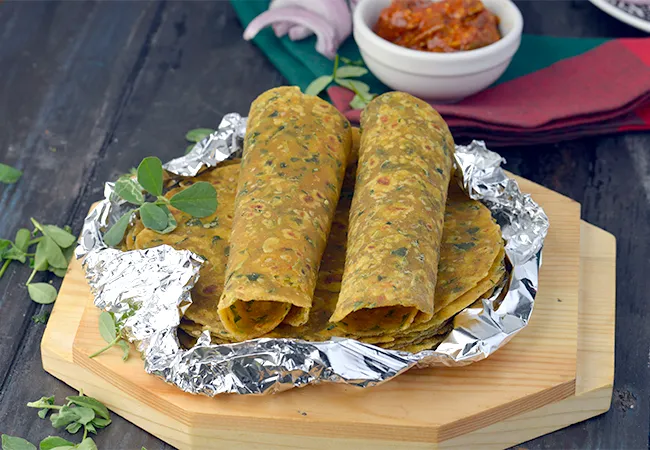
3a. Portioning
Divide dough into equal-sized balls (about the size of a lime). Keep covered to prevent drying.
3b. Rolling
- Dust lightly with dry flour.
- Roll each ball into a thin, round disc of about 6–7 inches diameter.
- Uniform thickness ensures even cooking and reduces breakage during travel.
3c. Practical Consideration
Rolling theplas slightly thinner than chapatis helps them stay pliable longer. Too thick, and they may harden; too thin, and they may tear.
Step 4: Cooking the Theplas
4a. Heat Control
- Heat a flat griddle (tawa) to medium-high.
- Test with a drop of water; it should sizzle immediately.
4b. Cooking Process
- Place rolled thepla on the hot tawa.
- Cook one side until bubbles appear; flip.
- Apply ½ tsp oil or ghee to the surface and flip again.
- Repeat until both sides are golden with light brown spots.
4c. Storage Optimization
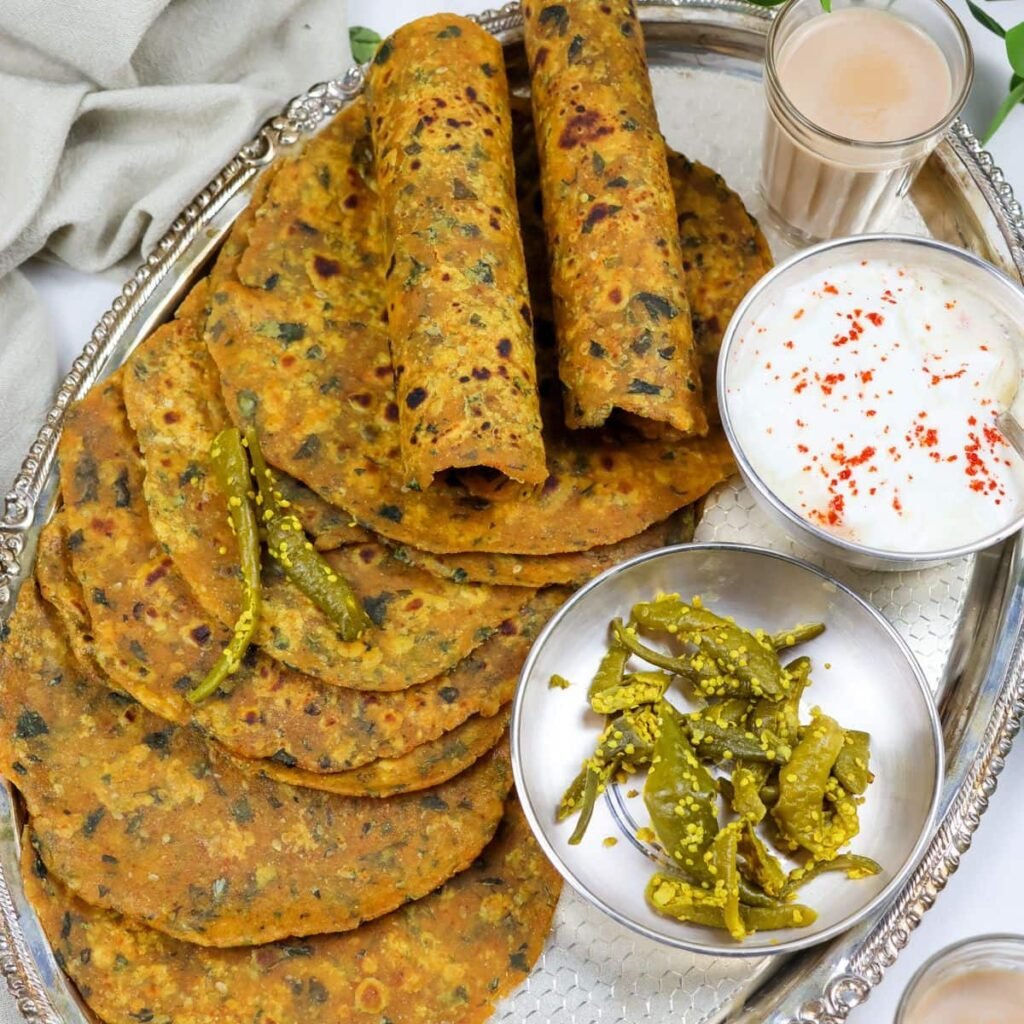
- Apply minimal oil—enough to lock in moisture but not soak the bread.
- Stack cooked theplas on a cloth-lined plate to absorb steam and prevent sticking.
4d. Shelf Life Note
Properly cooked and lightly oiled theplas remain fresh at room temperature for 24–36 hours, longer if stored in airtight containers.
Step 5: Packing & Travel Storage
5a. Cooling Before Packing
Allow theplas to cool completely. Packing hot theplas traps steam, making them soggy and prone to spoilage.
5b. Wrapping & Containers
- Wrap theplas in butter paper or aluminum foil.
- Place them in an airtight steel or plastic container.
- For long trips, use insulated bags to maintain temperature.
5c. Pairing for Travel
Traditional accompaniments like yogurt or curries are not travel-friendly. Instead, pair with:
- Dry chutneys: Peanut, garlic, or sesame chutney powders.
- Pickles: Mango, lemon, or mixed vegetable pickles (in small portions).
- Tea or buttermilk (if accessible during journey): Complements flavors and aids digestion.
Nutritional Profile of Theplas
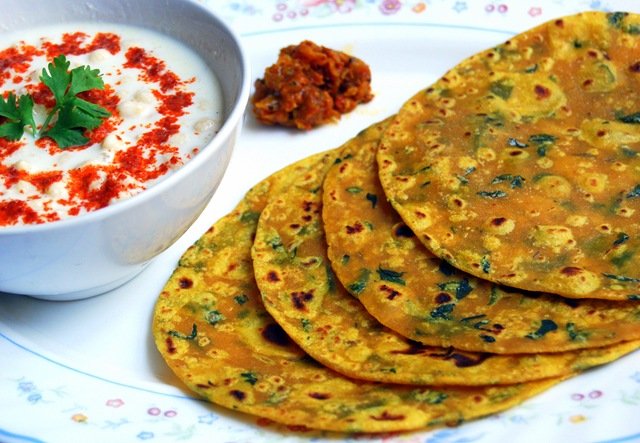
- Carbohydrates: Wheat flour provides steady energy for travel.
- Proteins: Yogurt, gram flour, and sesame seeds increase protein content.
- Fiber & Micronutrients: Fenugreek leaves add iron, calcium, and fiber.
- Healthy fats: Minimal oil aids in softness and satiety.
This balance makes thepla a complete travel-friendly meal, superior to processed snacks.
Common Mistakes & How to Avoid Them
| Mistake | Effect | Correction |
|---|---|---|
| Adding too much water | Dough becomes sticky, theplas spoil quickly | Use yogurt + controlled water |
| Overcooking | Hard, brittle theplas | Maintain medium heat, flip timely |
| Packing when hot | Soggy, spoiled theplas | Cool fully before wrapping |
| Skipping oil | Dry, hard theplas | Add at least ½ tsp oil per piece |
Travel Case Study: Why Theplas Work
Historically, Gujarati merchants and families carried theplas during long journeys by train or road. The combination of flour, oil, and spices created a food that resisted quick spoilage. Unlike plain chapatis, which dry out, theplas retain moisture and taste.
For modern travel, they remain practical—portable, nourishing, and comforting. Their ability to stay soft over extended hours makes them superior to other flatbreads for journeys.
Conclusion
Thepla is not just a flatbread—it is a symbol of culinary foresight and cultural adaptation. Designed for journeys, it embodies balance: soft yet sturdy, flavorful yet travel-safe, nutritious yet simple. By following this 5-step recipe—choosing travel-appropriate ingredients, kneading a balanced dough, rolling evenly, cooking carefully, and packing wisely—travelers can enjoy fresh, soft theplas throughout their journey.
This vegetarian recipe ensures taste and health remain intact without relying on non-veg accompaniments or preservatives. As such, thepla stands as a timeless solution for portable nourishment, connecting tradition with practicality.
